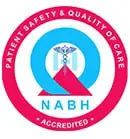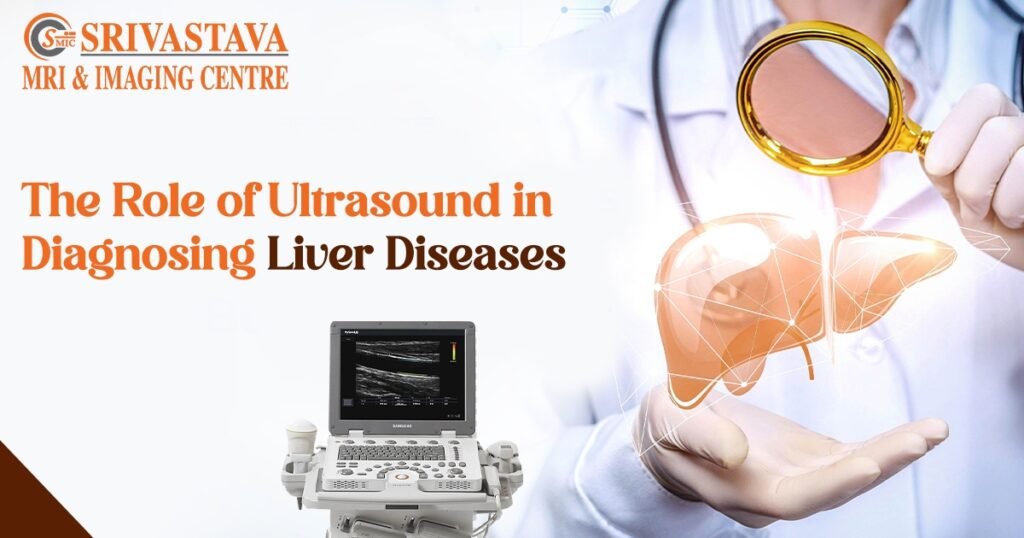Liver disease is a global health concern, with millions of people affected by conditions such as fatty liver disease, cirrhosis, hepatitis, and liver cancer. Early diagnosis is critical in managing these diseases effectively, as timely intervention can slow the progression and prevent severe complications. Ultrasound, a widely used imaging technique, plays an essential role in diagnosing liver diseases. Non-invasive, safe, and readily available, ultrasound is the first line of defence in detecting liver abnormalities.
For individuals in the vicinity of AIIMS Hospital, choosing a reliable ultrasound centre near AIIMS Hospital is key to obtaining accurate and timely diagnosis. Srivastava MRI and Imaging Centre, a prominent diagnostic facility, offers cutting-edge imaging services, including ultrasound, to diagnose liver disease and other health conditions.
Understanding Ultrasound in Liver Disease Diagnosis
Ultrasound is a diagnostic technique that uses high-frequency sound waves to create real-time images of the liver. This method is ideal for examining the liver’s size, shape, and structure and can identify various liver diseases. Unlike some imaging modalities that use ionizing radiation, ultrasound is completely radiation-free, making it a safe option for patients of all ages, including pregnant women and those who require multiple screenings.
The primary uses of ultrasound in liver disease diagnosis include –
- Detecting Fatty Liver Disease – Fatty liver disease is one of the most common liver disorders, often linked to obesity, diabetes, and alcohol consumption. Ultrasound can detect the accumulation of fat in liver cells, helping to diagnose both alcoholic and non-alcoholic fatty liver disease (NAFLD).
- Identifying Cirrhosis – Cirrhosis is a serious condition where the liver becomes scarred due to long-term damage. Ultrasound can reveal the telltale signs of cirrhosis, such as an uneven liver surface, a change in liver size, and the presence of ascites (fluid in the abdomen).
- Evaluating Liver Tumors and Cysts – Ultrasound is effective in detecting liver masses, such as tumours or cysts. Benign (non-cancerous) and malignant (cancerous) tumours can be differentiated based on the appearance of the lesion, helping to guide further testing, such as biopsies or advanced imaging techniques.
- Assessing Liver Inflammation – Conditions like hepatitis cause inflammation of the liver, which can be detected on an ultrasound. Ultrasound may show swelling and structural changes, helping to identify infections or autoimmune diseases affecting the liver.
- Monitoring Chronic Liver Disease – For patients with chronic liver conditions, regular ultrasounds help monitor the disease’s progression and assess the effectiveness of treatment.
Advantages of Ultrasound in Liver Diagnosis
Ultrasound is favoured by healthcare professionals for liver disease diagnosis due to its numerous benefits.
- Non-invasive and Painless – Unlike surgical procedures or invasive diagnostic tests, ultrasound requires no needles, incisions, or sedation. It is a completely painless procedure, making it comfortable and stress-free for patients.
- No Radiation Exposure – Ultrasound is free of ionizing radiation, making it a safer option than X-rays or CT scans, especially for patients who require frequent imaging, such as those with chronic liver diseases or pregnant women.
- Real-time Imaging – Ultrasound provides real-time images of the liver, allowing immediate assessment and diagnosis. This capability is particularly useful for guiding procedures such as liver biopsies, where precision is essential.
- Cost-effective and Accessible: Compared to other imaging techniques like MRI and CT scans, ultrasound is generally more affordable and widely available, making it accessible for a broader patient base.
How Ultrasound Helps in Early Detection of Liver Disease
Early detection is critical in managing liver disease. Many liver diseases, such as cirrhosis and liver cancer, often progress silently, showing no symptoms until advanced stages. Ultrasound plays a vital role in identifying these conditions in their early stages when treatment is more effective.
- Screening for Liver Diseases – Ultrasound is often used as a screening tool for individuals at high risk of liver disease, such as those with a history of alcohol abuse, obesity, or viral hepatitis. By detecting liver abnormalities early, ultrasound helps prevent the disease from progressing to severe stages.
- Guidance for Further Testing – In some cases, ultrasound may detect abnormal growths or structural changes in the liver that require further investigation. The images obtained from ultrasound can guide the physician in ordering additional tests, such as MRI, CT scans, or liver biopsies, ensuring a more comprehensive diagnosis.
The Role of Srivastava MRI and Imaging Centre in Liver Disease Diagnosis
Choosing the right diagnostic centre for liver disease evaluation is crucial. Located near AIIMS Hospital, Srivastava MRI and Imaging Centre is a leading facility equipped with state-of-the-art ultrasound technology and experienced radiologists who specialize in liver imaging.
What makes Srivastava MRI and Imaging Centre unique
- Advanced Imaging Technology – Srivastava Imaging Centre uses high-resolution ultrasound equipment that ensures accurate and detailed images of the liver, allowing for precise diagnosis of liver diseases.
- Experienced Radiologists – The centre boasts a team of highly skilled radiologists with expertise in interpreting liver ultrasounds. Their knowledge and experience ensure that patients receive reliable and accurate diagnoses.
- Comprehensive Diagnostic Services – Beyond ultrasound, Srivastava MRI and Imaging Centre offers a range of diagnostic services, including MRI, CT scans, and other imaging modalities. This ensures that patients receive comprehensive care under one roof, streamlining the diagnostic process.
- Convenient Location – Situated near AIIMS Hospital, Srivastava Imaging Centre is easily accessible for patients seeking expert diagnostic services. Its proximity to AIIMS makes it a convenient choice for individuals looking for high-quality imaging in Delhi.
Conclusion
Ultrasound is an essential tool in diagnosing liver disease, offering a non-invasive, radiation-free, and cost-effective method for detecting a range of liver conditions. Whether it’s identifying fatty liver disease, cirrhosis, or tumours, ultrasound provides vital information that guides the next steps in patient care. Choosing a reliable and well-equipped diagnostic centre, such as Srivastava MRI and Imaging Centre near ultrasound centre near AIIMS Hospital, ensures that patients receive accurate diagnoses and expert care. Early detection through ultrasound can significantly improve outcomes for liver disease patients, making it an indispensable component of liver health management.



